| japanese I english |
Shigeru Nishikawa, "under construction or destruction: modern city"April 6th - May 18th, 2024 taguchi fine art, tokyo |
|
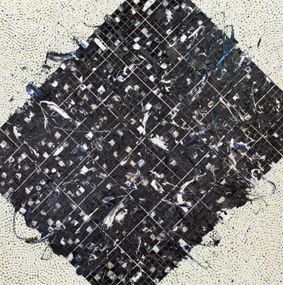
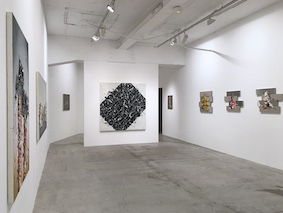
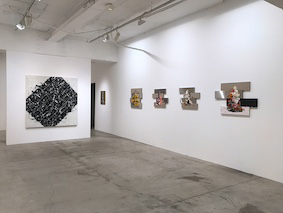
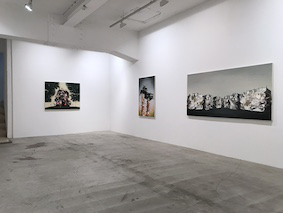
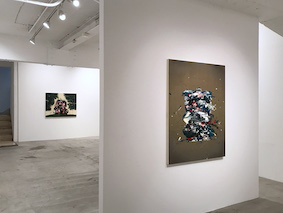
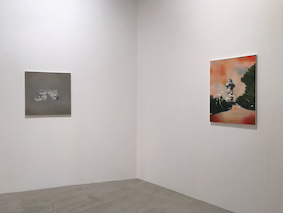
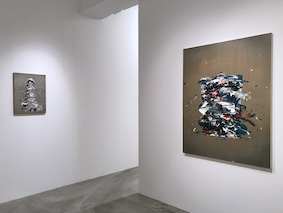
|
Shigeru Nishikawa was born in Gifu Prefecture in 1977. Withdrew from the Environmental Design Course in the Department of Civil Engineering, Faculty of Science and Engineering at Kinki University in 1997 and completed the Painting Course of the Osaka College of Art in 2002. In 2007 stayed in the U.S. for a year and assisted in the painting course at the Triform Camp Hill Community, a community for the disabled and able-bodied in New York State. He has had solo exhibitions in Nara, Kyoto, and Tokyo, and is currently based in Nara City and Kizugawa, Kyoto. Nishikawa has been experimenting with abstract expression using buildings and structures under construction, renovation, or destruction, covered with fabric-like sheets that suddenly appear in the city as the subject. For Nishikawa, they symbolize the struggle between the forces of human beings to expand the cities and the forces of nature. These "Shield House" works are painted with bold brushstrokes that depart from realism and reproduction, an appropriate technique to the theme, that is, “the fluidity of all things”, “the creation and disappearance”, and “time”. The show will present a typical post-modern Japanese urban landscape with a configuration of works featuring houses, buildings, temples, torii gates, bridge piers, radio towers, mega solar panels, and other structures covered by temporary enclosures. In contemporary Japan, new residential areas continue to spread in the suburbs, and high-rise buildings continue to grow in urban areas. As new buildings are erected, the buildings and places that once stood there are forgotten, and the landscape continues to change from moment to moment. How much will the modern city, which continues to expand both horizontally and vertically, continue to expand ? While various technologies are being updated and refined, this kind of urban expansion does not seem to have changed much since the period of rapid economic growth. By the way, "modern" in comparison with "contemporary" has a strong image of pre-contemporary, but according to the dictionary, it means not only modern but also contemporary. Nevertheless, when we say "modern," we feel a discrepancy between the meaning and the current recognition of the word. We have named the exhibition "modern city" in reference to the gap between today's sophisticated and updated technology and the unchanging urban structure. The mega solar power plants that pervade the suburban countryside are one example of an anachronistic landscape caused by such technology and unchanging urban structures. I hope to examine the state of the modern city through this solo exhibition, "modern city" Shigeru Nishikawa checklist of the installation 1. Sealed Tower 157, 2024 oil on canvas, panel 91.0 x 116.7 cm 2. Sealed Pier 2, 2024 oil on canvas, panel 116.7 x 80.3 cm 3. Sealed House 130 -new town-, 2020 oil and graphite on canvas, panel 97.0 x 194.0 cm 4. Light Field 2, 2011-24 oil and graphite on canvas, panel 150.0 x 150.0 cm 5. Gap - Sealed Building 3, 2024 oil on canvas and stainless steel 61.0 x 67.6 cm 6. Gap - Sealed Building 2, 2024 oil on canvas and stainless steel 49.0 x 66.7 cm 7. Gap - Sealed Building 1, 2024 oil on canvas and stainless steel 49.0 x 64.5 cm 8. Gap - Sealed Building 4, 2024 oil on canvas and stainless steel and iron 65.2 x 53.0 cm 9. Sealed Tower 31, 2024 oil, graphite, and metal powder on canvas 116.7 x 91.0 cm 10. Sealed Gate 10, 2024 oil and metal powder on canvas 60.6 x 60.6 cm 11. Sealed Tower 32 -Light House-, 2024 oil on canvas 72.7 x 53.0 cm 12. Sealed Tower 33, 2024 oil and metal powder on panel 53.0 x 41.0 cm |